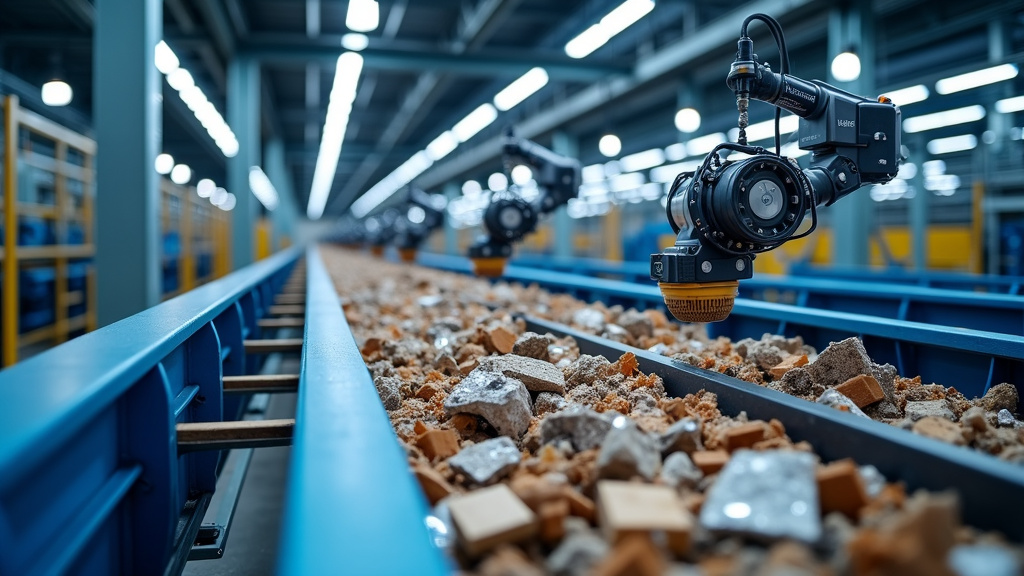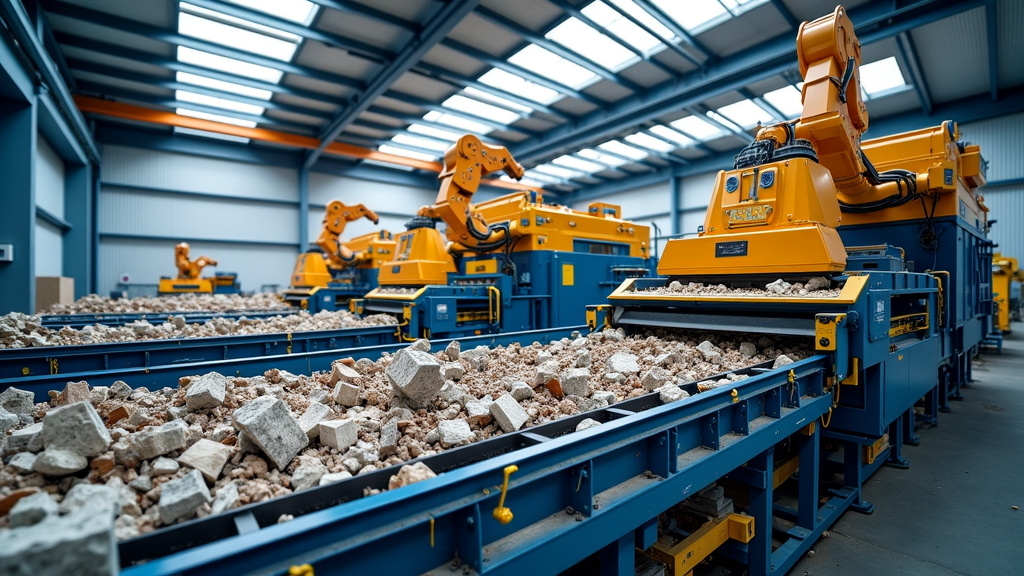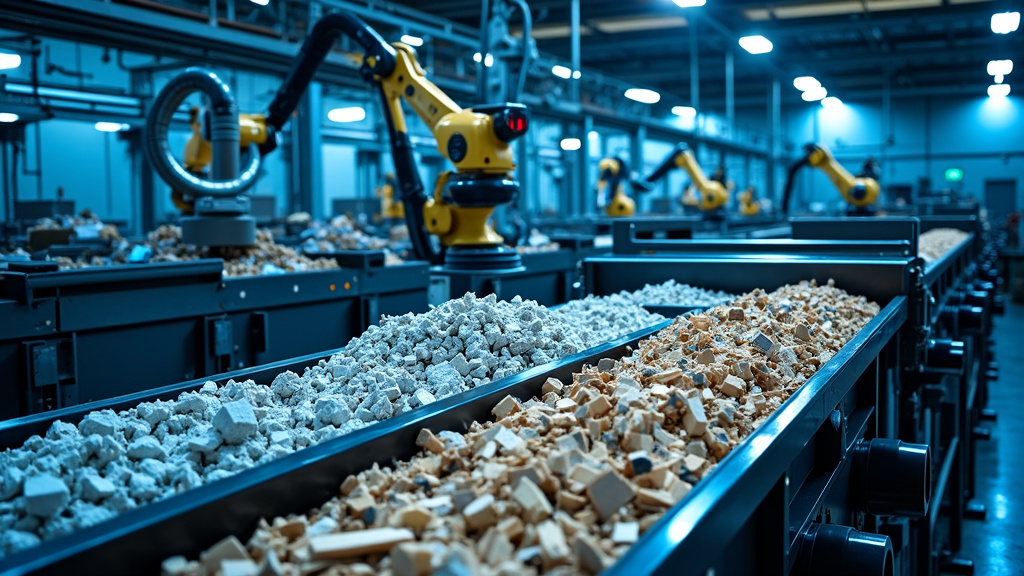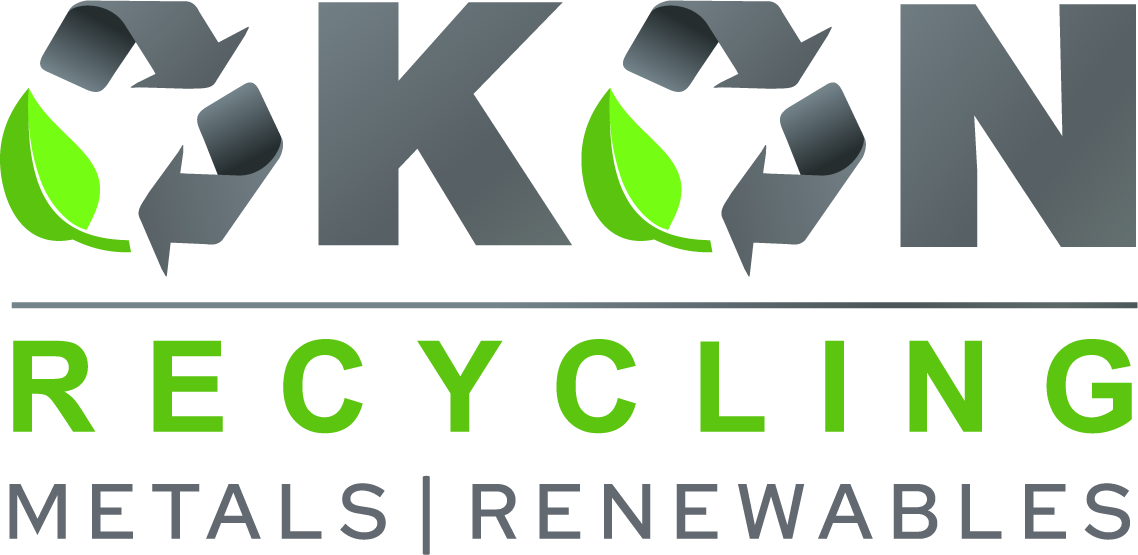5901 Botham Jean Blvd, Dallas, TX 75215
Technologies for Construction and Demolition Debris Sorting
February 5, 2025Did you know that the global construction industry generates over 1 billion tons of waste annually? This figure highlights the importance of efficient sorting and recycling of construction and demolition (C&D) debris.
Imagine a world where every nail, scrap of lumber, and fragment of concrete finds new life instead of ending up in a landfill.
The integration of artificial intelligence and waste sorting has ushered in a new era of efficiency and precision. Next-generation optical sorting technology now has the capability to identify and categorize materials at incredible speeds, far surpassing human capabilities. Besides sorting, these systems learn, adapt, and improve over time, continuously enhancing their accuracy in material recognition.
Why does this matter? The implications are significant. For one, every ton of debris diverted from landfills and successfully recycled is a victory for sustainability and a step towards a circular economy.
As environmental laws become stricter worldwide, industries face increasing pressure to adopt more sustainable practices. Companies leading this change, like Okon Recycling, are not just complying with regulations; they are pioneering the path forward.
By implementing these advanced sorting solutions, they are setting new standards for efficiency and environmental stewardship in the recycling industry.
Technologies in Construction and Demolition Waste Sorting

The construction and demolition (C&D) sector is experiencing a significant transformation in recycling efficiency due to cutting-edge sorting technologies. These innovations are enhancing material recovery rates and paving the way for a more sustainable future in the industry.
Optical sorting equipment is at the forefront of this technological advancement. These sophisticated systems use high-definition cameras and sensors to rapidly categorize materials by type, including wood, plastics, and metals. Near-infrared (NIR) technology has become particularly impactful in the sorting process.
Precision-Driven Sorting Technologies
The use of high-definition NIR and color separators has greatly enhanced the precision of material identification. These technologies can distinguish between different types of plastics or detect subtle color variations in materials, ensuring a higher purity of sorted waste streams.
While advanced technologies are making significant impacts, simpler methods still play a crucial role in C&D waste sorting. Roller screening and air separation units remain effective for less complex sorting needs, often serving as the first line of defense by removing larger debris or separating materials based on density.
The Rise of AI and Robotics in Waste Sorting
Artificial Intelligence (AI) systems and robotic arms are adding another layer of accuracy to the sorting process. These technologies can learn and adapt to new waste streams, making them invaluable in an industry where material compositions are constantly changing.
Robotic arms, guided by sophisticated AI algorithms, can identify and sort materials with remarkable speed and precision. This combination of AI and robotics is particularly effective in handling mixed waste streams, where traditional sorting methods might fall short.
Versatility in Application
One of the most significant advantages of these modern sorting technologies is their versatility. From bustling construction sites to large-scale recycling facilities, these solutions can be deployed in various environments. This flexibility allows for on-site sorting, reducing transportation costs and improving overall recycling efficiency.
A few companies have successfully combined hyperspectral imaging with deep learning and robotics to develop flexible, high-throughput systems for C&D waste sorting. This system demonstrates the potential of integrating multiple technologies for enhanced sorting accuracy.
The Impact on Recycling Efficiency
The implementation of these advanced sorting technologies has led to significant improvements in recycling efficiency. Recycling facilities can now process larger volumes of waste more quickly and with greater accuracy, increasing the amount of material that can be recycled and enhancing the quality of the recycled materials, making them more valuable in the market.
Moreover, the ability to sort materials more effectively means less waste ends up in landfills. This aligns with the growing emphasis on sustainability in the construction industry and supports the circular economy model.
Looking Ahead: The Future of C&D Waste Sorting
As these technologies continue to evolve, we can expect even more sophisticated sorting solutions in the future. The integration of machine learning algorithms with existing technologies could lead to systems that can adapt in real-time to changes in waste composition.
Additionally, the development of more compact and mobile sorting units could make on-site sorting more feasible for smaller construction projects, further reducing the environmental impact of C&D waste.
In summary, the adoption of modern sorting technologies in the C&D sector is not just improving recycling efficiency; it’s reshaping the entire approach to waste management in the industry. As these technologies become more widespread, they promise to play a crucial role in building a more sustainable future for construction and demolition practices.
| Technology | Key Features | Efficiency |
|---|---|---|
| Manual Sorting | Physical separation by hand | Suitable for small projects |
| Mechanical Sorting | Automated systems for bulk waste | Handles large volumes |
| Optical Sorting | High-definition cameras, NIR technology | High precision in material identification |
| AI & Robotics | AI algorithms, robotic arms | High speed and accuracy |
| Sensor-Based Sorting | Uses sensors for material differentiation | Promising results, requires multiple steps |
Challenges and Solutions in Debris Sorting

The recycling industry faces significant hurdles when sorting construction and demolition (C&D) waste. The diverse materials and varying levels of contamination create a complex puzzle for waste managers. As urban development progresses rapidly, efficient and cost-effective sorting solutions are increasingly critical.
A primary challenge is the varied nature of C&D waste streams. Unlike household recycling, which tends to be more predictable, debris from construction sites can include concrete, wood, plastics, metals, and hazardous materials. This diversity necessitates sophisticated sorting technologies to identify and separate a wide range of substances.
Material contamination presents another major obstacle. Debris often arrives at recycling facilities mixed with dirt, other waste types, or potentially harmful substances. This contamination complicates the sorting process and can reduce the quality and value of recovered materials.
As Xiao et al. (2019) note, “The major drawback of hyperspectral imaging is its high investment cost. Complex structures and high volumes of sensory data also create challenges when processing them.”
Innovative Solutions Transforming C&D Waste Sorting
Despite these challenges, the industry is making significant strides in developing innovative solutions. Here are some cutting-edge approaches revolutionizing C&D waste sorting:
- Particle Size-Based Separation: This technique leverages the tendency of different materials to break down into distinct particle sizes during demolition. Screens and classifiers can separate larger pieces of concrete or wood from finer materials like sand or metal shavings.
- Eddy Current Separators: These devices use powerful magnets to create eddy currents in non-ferrous metals, effectively pushing them away from other materials. This technology is particularly useful for recovering valuable metals like aluminum and copper from mixed waste streams.
- Optical Sorting Systems: Advanced cameras and sensors, coupled with artificial intelligence, can rapidly identify and sort materials based on visual characteristics. These systems are becoming increasingly sophisticated, capable of distinguishing between different types of plastics or grades of wood.
- Integrated Multi-Technology Systems: Recognizing that no single technology can address all sorting challenges, facilities are increasingly adopting integrated systems that combine multiple sorting technologies. For example, a system might use magnets to remove ferrous metals, followed by eddy current separation for non-ferrous metals, and finally optical sorting for remaining materials.
While these technologies offer promising solutions, their implementation comes with challenges. High initial investment costs can be a significant barrier for many recycling facilities. Additionally, the complexity of these systems often requires specialized training for operators and maintenance staff.
Future of Sorting Technologies in a Circular Economy

AI-driven sorting technologies are transforming the industry rapidly. These smart systems, with their remarkable ability to distinguish between materials, are turning what was once a daunting task into a streamlined process. Imagine robots that can see the difference between concrete and copper wire, sorting with precision that surpasses human efforts.
However, technology alone isn’t driving this change. Innovative policy frameworks are emerging as key players in this waste revolution. Governments and industry leaders are crafting regulations that incentivize recycling and penalize wasteful practices, pushing the construction sector towards a more sustainable future.
The numbers illustrate a compelling future. By 2030, experts project that AI-powered sorting could increase recycling rates in the construction sector by up to 50%. This isn’t just beneficial for the planet; it’s a significant opportunity. The global market for AI in waste management is expected to reach $2.7 billion by 2025.
Companies like Okon Recycling are setting the pace. Their solutions demonstrate what’s possible when innovation meets environmental stewardship. As we look to the future, it’s evident that the path to sustainability is paved with materials we once discarded.
For those ready to join this transformative journey, Okon Recycling stands ready to lead the way. Contact us at 214-426-6566 to learn how we can work together to create a cleaner, more sustainable future.
